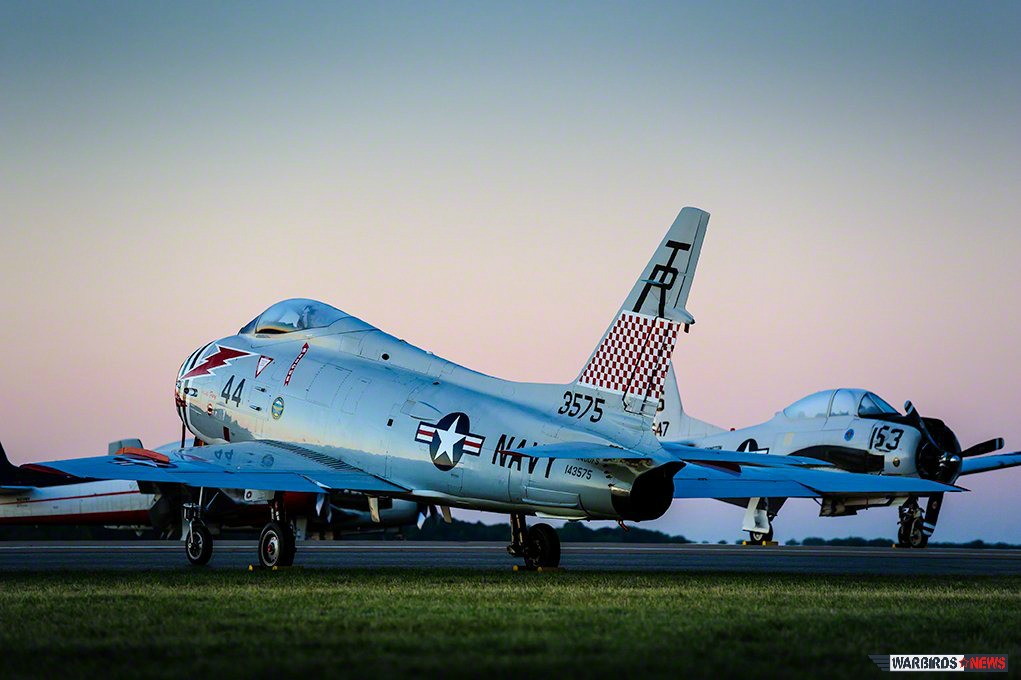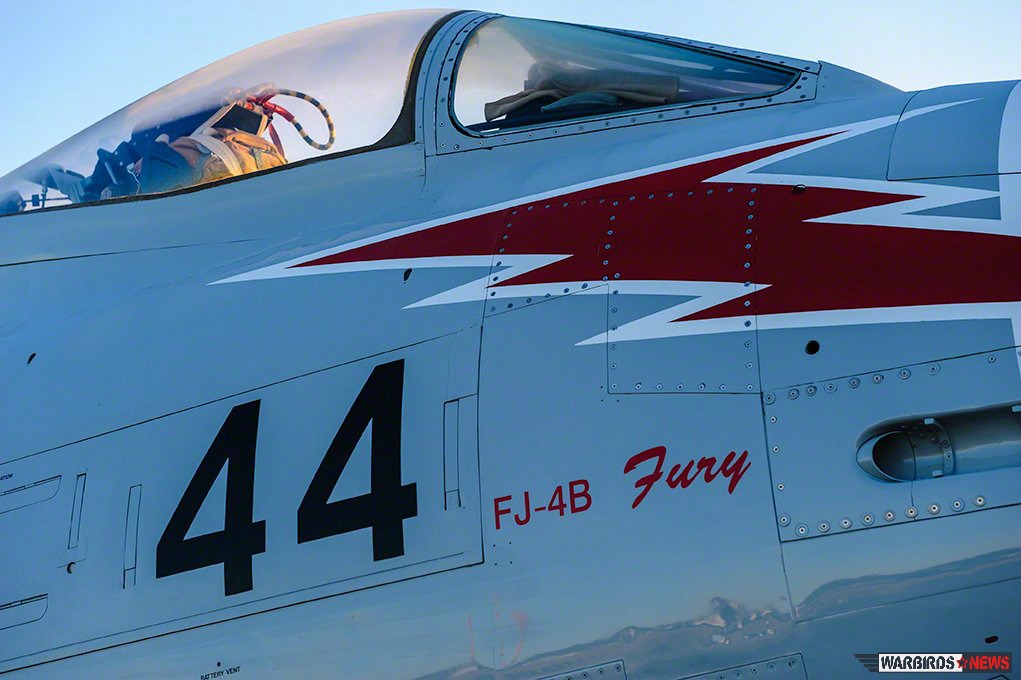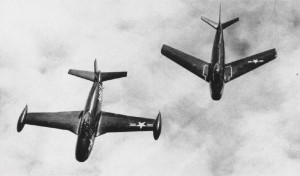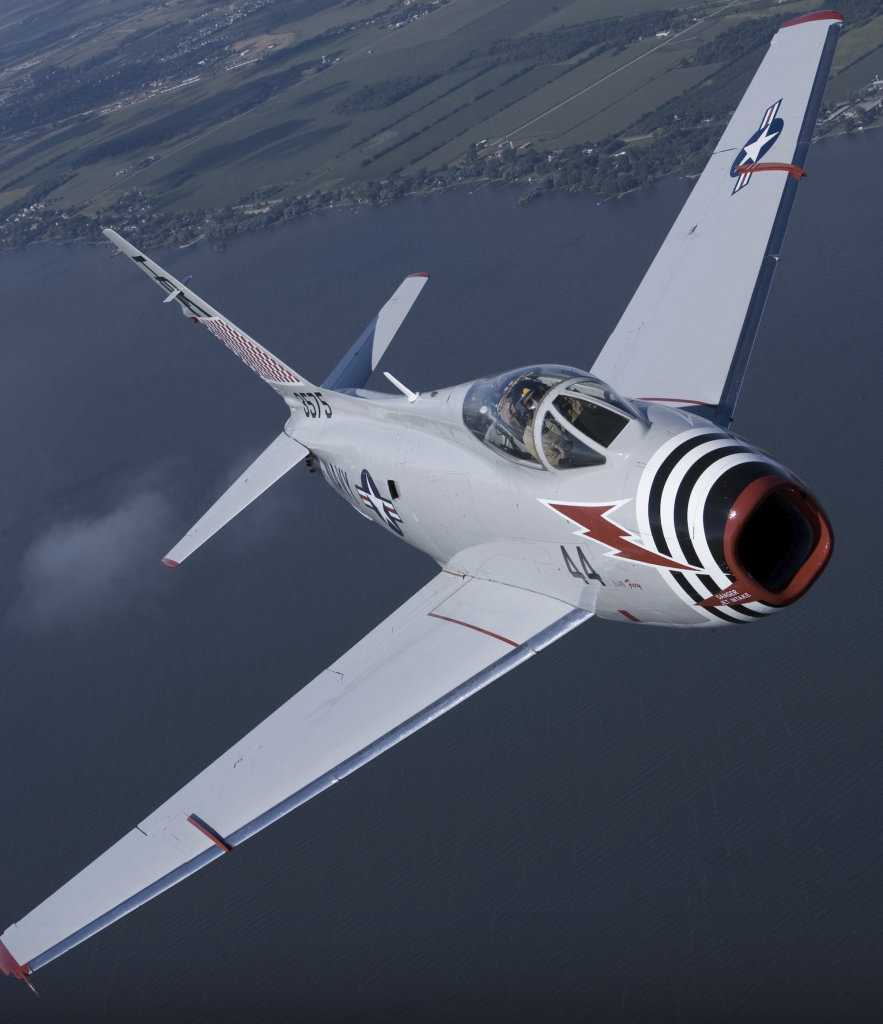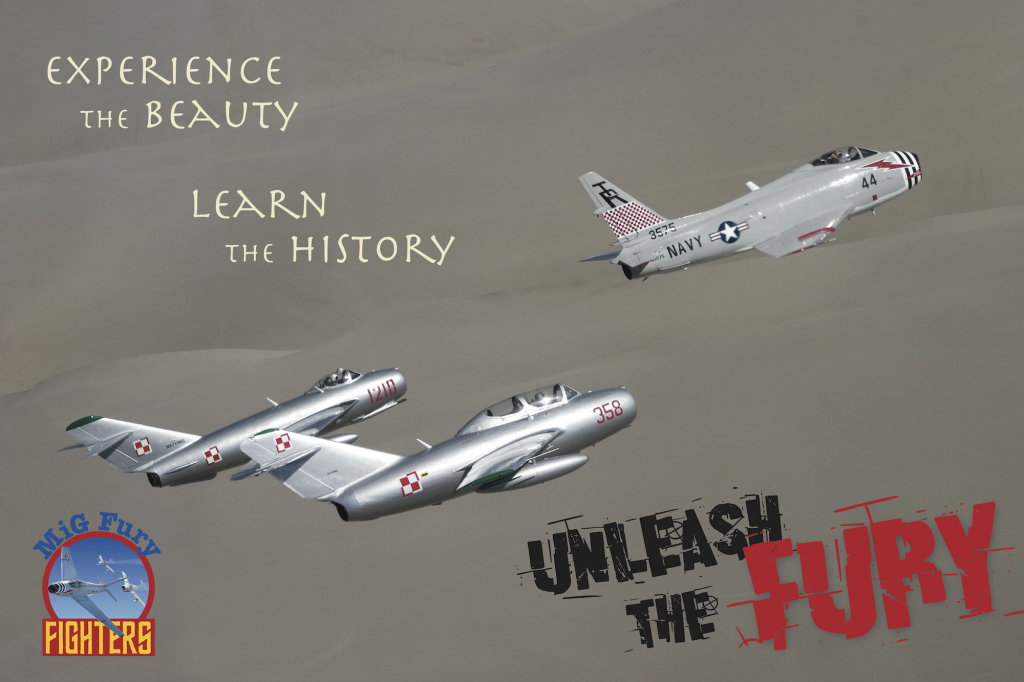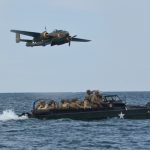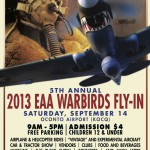Jake Peterson Reports:
Every year a gathering of people and aircraft come together in one big celebration of freedom, technology, and patriotism. That event is EAA Airventure in Oshkosh, Wisconsin. For one week people of all ages and nationalities come out to watch the performances of some of aviation’s best. During that week hundreds if not thousands of aircraft line runways 2 7 and 3 6. Everything from homebuilt to antiques, to warbirds, and modern jets are there supporting the event. With this great diversity comes some truly rare planes, one of which saw this year was the North American FJ-4B Fury, BuNo 143575.
The FJ-4B is a variant of the FJ-4. The -4B was designed as an attack aircraft and not just any attack aircraft, but the first one designed to carry a nuclear bomb off of a carrier deck. The FJ-4B weighed in at 13,500 lbs. empty and had a takeoff gross weight of 28,000 lbs. It could travel 1,640 nautical miles on internal fuel but could extend its range to 2,500 miles with four external 200-gallon drop tanks. The FJ-4B was extensively utilized, including being deployed with nine US Navy and three Marine units, later replaced in the 1960s by the Douglas A-4 Skyhawk.
(Image Credit: US Navy)
The FJ-4B has had a long and unique history, as it came a long way from its initial planning. The US Navy’s FJ series started its development in the 1940s around the same time that the USAF F-86 Sabre jet was being developed. The first model, the FJ-1 Fury was a subsonic fighter with straight wings and used the 3,820lb thrust GE-Allison J35 engine; however, after the Germans proved the efficiency of the swept wing design during World War II, later models, including the F-86 Sabre Jet, adopted similar swept wing designs. The FJ-2 Fury incorporated the GE J-47 engine with 6,000lbs of thrust, folding wings to help conserve space on aircraft carriers, and 4 20mm cannons instead of the six 50-caliber machine guns the F-86 had. However the FJ-2 was 1,000lbs heavier than the F-86A and due its lack of performance, the FJ-3 Fury was developed with the Wright J-65 engine, providing 7,600lbs of thrust. The FJ-4 was designed as a long-range fighter and was equipped with a larger fuselage, and longer, thinner laminar flow wings allowing for more fuel to be carried.
Due to the plane’s greater roll authority, good low-speed handling characteristics, and supersonic capabilities, the FJ-4B was a well-balanced carrier attack plane. The FJ-4 was equipped with wide-tracked landing gear, a catapult hook, and an A-frame arresting hook. The FJ-4B model was also equipped with the Wright J65-W-16A axial flow turbojet engine with a thrust capability of 7,700lbs. One of the unique characteristics of the -4B is that it was equipped with a “buddy system.” 2 FJ-4B’s would take off from the carrier and meet up at a pre-arranged position. One would have the “special store” and the other the buddy system. After refueling the attack plane would carry on with its mission while the other returns to the carrier. The FJ-4B was also the first aircraft equipped with the Low Altitude Bombing System (LABS). The LABS system was an automatic system that provided the correct technical information for a low-angle attack run and release of a nuclear bomb, as well as the correct pull-out procedure to avoid the nuclear blast.
(Image Credit: MiG Fury Fighters)
Of the 374 FJ-4s built only one remains flying! It was built in 1958 in the second to last batch of 222 aircraft. It was delivered to VA-192 “Golden Dragons” on board the USS Bon Homme Richards, served with several other Navy squadrons, and ended its Navy career on board the USS Hancock part of VA-216, the “Black Diamonds,” during Vietnam. After Vietnam, it was sent for demolition at Litchfield Park, Arizona but was missed and was bought by former NAA test pilot and President of Flight Systems in Mojave, California, Bob Laidlaw, in 1971. Laidlaw was looking for an aircraft that could stay subsonic in a near-vertical dive from above 50,000ft. to fulfill a civilian contract to test the pattern-matching system of a Pershing II intermediate-range ballistic missile. With the four large speed brakes on the FJ-4B, part of the LABS system, the FJ-4B fit the profile. BuNo143575 was restored to flight status and flew over 700 hours of testing with a Pershing II slung under its wing. It was registered during this time as N400FS, the registration it still bears today.
(Image Credit: MiG Fury Fighters)
After the tests were completed, BuNo143575 was left derelict in Mojave until it was bought in 1991 by Larry Mockford of T-bird Aviation who began to restore her. It was later bought from Larry by MiG Fury Fighters in Driggs, Idaho where it currently resides. N400FS finished in the markings and paint scheme of the Fleet Air Gunnery Unit of NAS El Centro, and goes to air shows to promote Naval Aviation, with the Fury performing in aerial dogfights with the other warbirds in MiG Fury’s fleet, a MiG 15bis and a MiG 17F.







